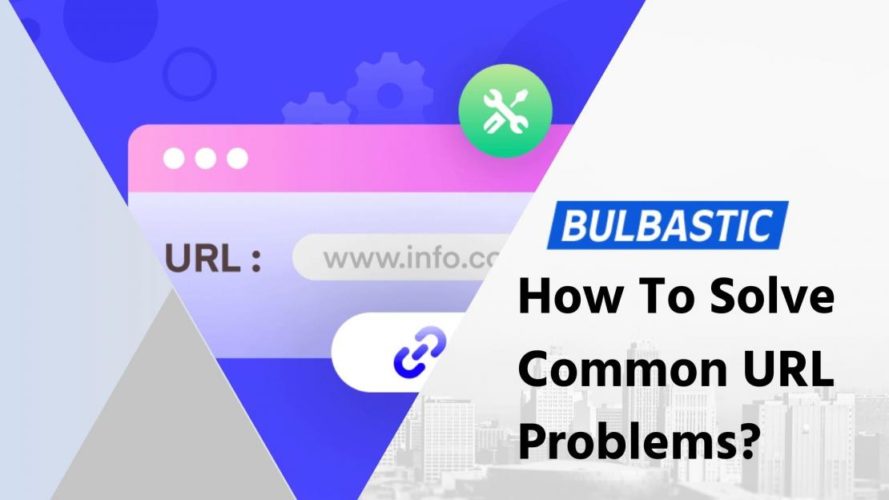
3 Common URL Problems: How Can You Fix It?
At the moment, the main problems with links are www and non-www versions of your URLs, duplicate home page URLs and dynamic URL links. Keep reading to find out how to solve them.
Many people understand the importance of creating quality and interesting content that won’t work without SEO. As you know, SEO can be divided into several categories such as content, links, and architecture. Of course, links are very important, but now there are a huge number of poorly built sites that have quite big problems in their URL structure. These issues must be resolved as otherwise, they will lead to new issues such as duplicate content issues.
So, if you also encountered some difficulties and do not know how to fix URL problems, then below you can find information about the three most common URL errors. If your site has one or more of the above problems, then the following information will help you deal with them.
How to Fix Common URL Problems?
Now on the Internet, there are more and more requests like “my url is not working” or “link not working”, as many people have no idea how to fix url errors. Learn the three main mistakes and how to solve them:
1. Www and non-www versions of your URLs.
Perhaps the most common problem at the moment is non-www and www versions of site URLs. Thus, if your site contains such versions of all your URLs, then you will need to split the link value for the same content between two URLs. That is why, instead of capturing the full value of the link on the page you want to rank in the search results, you will need to split between the two URLs. It could be 50/50 or some other division.
How can you fix this issue?
In fact, at the moment there are a few things you need to do in order to fix this problem. First of all, you must determine for yourself which URL style suits you best and which one you want to use – www or non-www. Once you’ve done this, you’ll need to set up a 301 redirect. This is necessary so that any links to your non-preferred URL style go to the correct style. This is why you won’t lose link value by splitting it between two URLs. The next step is to set your preferred domain so that the list of search results matches your style. You can do this in the Google Webmster Tool. So now you need to make sure that every time you link to your site, you use your preferred URL style.
2. Duplicate Home Page URLs.
This problem is closely related to the first one we just covered, but it’s probably even worse because it’s on your home page.
Of course, there can be many different URLs that lead to the content of your page (especially if you haven’t corrected your www or non-www duplication). It is this problem that can lead to a lot of unnecessary duplication of links that look slightly different but lead to the same content.
• http://www.flowers.com
• http://flowers.com
• http://www.flowers.com/index.html
• http://flowers.com/index.html
So if you have links going to all four of them, you will be able to see a four-way split in link value. There are sites that have worked and fixed this problem, but finding their home page address can still be quite difficult to find. Moreover, you can even come across sites with different extensions that bring up the same page, which leads to additional duplication and loss of link value.
How can you fix this issue?
In fact, the solution to this problem is similar to the one in the first one. First of all, you need to set the home page URL to http://www.flowers.com. 301 will redirect everything else to this URL as it is the simplest option available. However, remember that if you have a non-www URL style, then the easiest address for you will be http://flowers.com. You also need to make sure that when you link to your home page, you are linking to the correct version of it.
3. Dynamic URL links
When you start including all sorts of parameters in your URLs, the possibilities for duplicating your content will be almost limitless, and the link will lose its value. Thus, different URLs can lead to the same content, and if you also start rearranging the parameters, the situation will become even worse, but the content will remain the same. This is what will lead to the absolute loss of the value of your link.
There are also other reasons that lead to problems with dynamic URLs. Many companies now use these parameter-based URLs for statistical purposes, which can completely destroy SEO. This problem also exists with sites that provide their partners with a unique identifier (for use in their links). Thus, a given site can have a huge number of partners that link to the same page, but each URL will be different (due to the fact that each partner has its own unique identifier).
How can you fix this issue?
If you can do this, make sure your site is using an SEO friendly base. It’s important to understand that it’s better to have a base URL that leads to the content, rather than having a URL that depends entirely on parameters. You can also set a canonical tag which will tell search engines to use the base version of the URL. Another way to deal with this problem is to collect data on the server site and redirect the visitor to the correct URL after you have captured all your data.